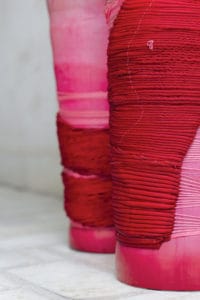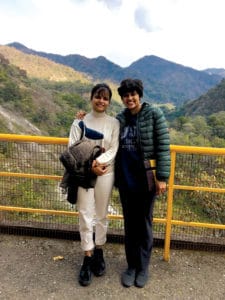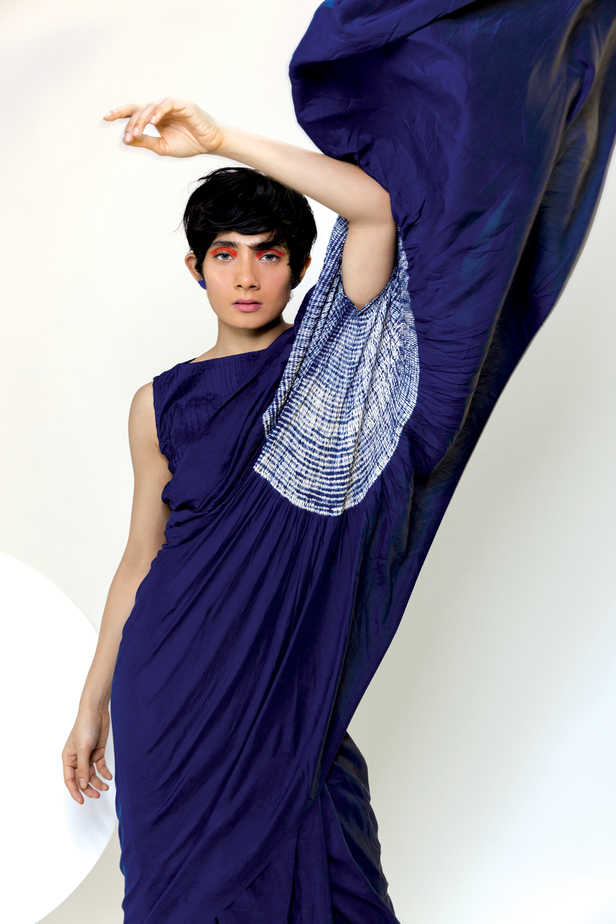New Delhi based textile studio, medium utilises its mastery in tie and dye for their first apparel collection called – Out of the blue
A green South Delhi neighbourhood is where label Medium has its studio, a workshop-cum-residence for the textile designer and founder Riddhi Jain, who has been living in the city after her post-graduation from NID.
A sun-lit room that reflects enough light in spite of Delhi’s pollution is where Jain sits. A rack of garments designed using Shibori techniques is placed in one of the corners and easily catches attention. But there is more to Jain’s work that you see in other objects that furnish her studio space.
Medium’s work explores Shibori in a way that pushes the boundaries of the craft. Jain recalls the time at NIFT where it took coursework in the last semester that introduced her to the possibilities within textiles before it becomes a piece of garment. “I would like to build things from scratch rather than buy the textile from the market. My four months graduation project was spent creating the textile. Garment development happened towards the end of it.”

Her final year project at NIFT utilised the thread waste that is left after the tie-and-dye process. These colourful threads that are used to sew and tie fabric while dyeing is a regular discard in resist-dyeing workshops. She developed chunks of these fuzzy threads as textiles for her graduation presentation. “These threads are sandwiched between two sheer layers of fabric —organza in this case”, she explains.
While NIFT ensured a firm foundation for her, it was at NID that she further honed her skills. “My mother has a design studio back in Kolkata. She uses a lot of tie-and-dye in her work as well. I ended up working with her for a year between my time at NIFT and NID.”
Since 2014, after NID, she has been designing sarees using Shibori. A lot the fabric is developed in Kolkata and Varanasi. Resist dye has been a forte of sorts and she does not seem to be done with it, even after exploring it in depth. These Shibori patterns feature in a lot of her work, sometimes coupled with Jaamdani, a weaving technique from close to her hometown. Her training and experience at NID come in handy when she is to develop new work for her label.
Most recently, she forayed into garments, which is a result of her acquaintance with Tulika Ranjan, a fashion designer whom she met via Instagram. “Meeting her and creating something with her was a very organic thing to happen. We are passionate about multiple things like Japanese culture, fashion’s adverse effects on the environment and Indian craft heritage.”

A collection called, “Out of the Blue”, a name that truly describes its nature is, in fact, a line of garments made entirely out of handwoven textiles like Tussar silk and Kala cotton. Developed using zero waste pattern making, an all indigo collection features Medium’s deftness in Shibori done in vegetable dyes. There is much more to savour about this collection, more than what can be counted on our fingers. A brainchild of Riddhi and Tulika, the collection uses both their understanding of textile and fashion making.
The garments retain the form a textile takes after it’s resist-dyed, a character the designers used to develop sleeves in some outfits. Shapes that can easily wrap all kinds of body frames make the collection inclusive of everyone. Delicate textiles woven with zari and crevices of Shibori make the spirit of each outfit from the collection
After 18 months of work, the collection is ready to be exhibited at shows and to the buyers. “We have a presentation coming up in Mumbai. Apart from this, we are going to participate in Bangladesh Fashion Week”, adds Jain. She recently showed the collection at Design One in Mumbai. However, the end goal is to take the collection to Japan which is scheduled for March next year. “For both Tulika and I, Japan is what we love and it translated into the collection. We want to show our work to buyers in Japan.”
On her part, Tulika explains, “Out of the Blue is a journey that not only brought Riddhi and me together on the project but also sparked conversations, exchange of ideas and knitting of common dreams. She would experiment on textiles and I would then come up with patterns and silhouettes which followed the nature and rhythm of Shibori on the textiles.” She is a recent graduate from NIFT Delhi. She adds, “Our first experiment had two Shibori circles which acted as unstitched sleeves and drew a lot of attention. It prompted us to play with circles throughout the collection. That’s why you would see circles jumping around in its various segments.”

Riddhi’s studio has patterns made in Shibori hung around the space. She creates a lot of textile art as well, in her free time. While Shibori is a well-explored craft done around the world by all kinds of creatives, everyone has their own way of doing it and it eventually reflects in their work and makes it distinct from that of others. A technique that requires a fabric to be tied in a certain way and dipped in a dye has a huge scope for a surprise. It is only when the fabric is untied after it is dyed, one will know the final pattern that will be imprinted on the fabric. “As a creative, I like to be able to plan my designs. Tie-and-dye is a DIY technique but as a craft, there is skill and beauty in being able to ideate what the final pattern is going to be. I have also tried tying the fabric in a random way which is often a surprise once when you open it.”
As a project, Out of the Blue uses Jain’s expertise in textile development and treatment whereas Ranjan brings in her fresh take on silhouettes. The result is a collection that has zero textile waste and no chemical treatment. An honest assignment, as Jain calls it, this collective work by the duo is a statement in a fast-paced fashion system that we are a part of.





